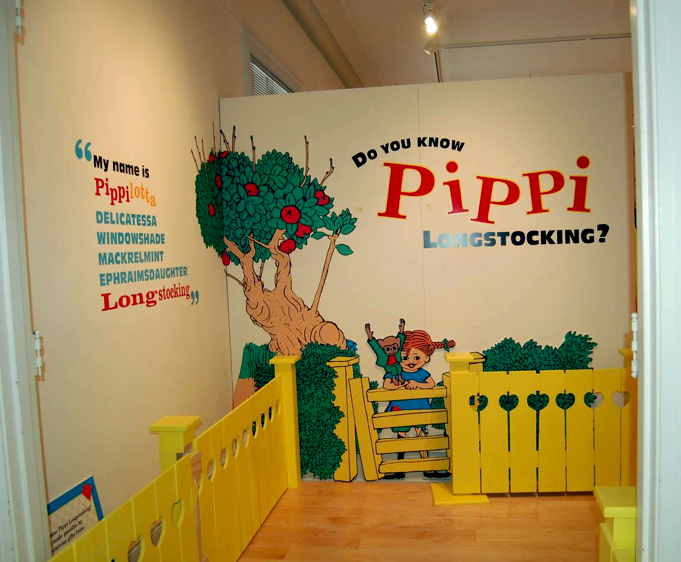When a red-haired, horse-lifting, freckle-faced, nine-year-old girl leapt from the pages of Pippi Longstocking (Pippi Långstrump) in 1945, she quickly made her way into the hearts of children and adults throughout Sweden. Astrid Lindgren (1907-2002), Pippi’s creator, once said that she wrote for her own inner child, which perhaps speaks to Pippi’s success.
With her special brand of exuberance, it was not long before Pippi Longstocking was captivating readers of all ages with her adventurous nature, generous spirit, and self-assured independence. Pippi became a symbol of freedom, especially in post-WWII Europe, which was then emerging from the crushing influence of authoritarian Germany. Now, translated into over ninety languages—from Afrikaans to Yiddish—Astrid’s Pippi has inspired the young and the young-at-heart worldwide.
This original ASHM exhibition engaged visitors with Lindgren’s delightful sense of humor and love of play. Life-sized tableaus of Ingrid Vang Nyman’s lively and timeless depictions of Pippi’s world set the scene for creative play. Kids had the opportunity to go inside Pippi’s home, Villa Villekulla, and experiment with one of Pippi’s favorite activities: cooking in her kitchen. You could also test your strength by lifting Pippi’s horse, explore “Thing-Finding” in Pippi’s cabinet of treasures, and scrub-a-dub-dub the floor with sponges on your shoes. Visitors could also discover how Astrid Lindgren influenced Swedish attitudes toward childhood; what childhood in Sweden looks like today; and how Pippi may, or may not, embody Swedishness.
This exhibition was made possible by generous gifts from Ulla Dagert and Paul Muther, IKEA, SWEA Philadelphia, Kuehlthau Family Foundation, SWEA New Jersey, Swedish Council of America, Marianne Baeckstrom, Evert Christensen, Jr., and an anonymous contributor.
We are also grateful for the support of the Barbro Osher Pro Suecia Foundation, George C. and Esther Ann McFarland Foundation, Auxiliary, Midsommarklubben, and the Philadelphia Cultural Fund.
Portions of this exhibition are on display in the Pippi Longstocking Gallery.

